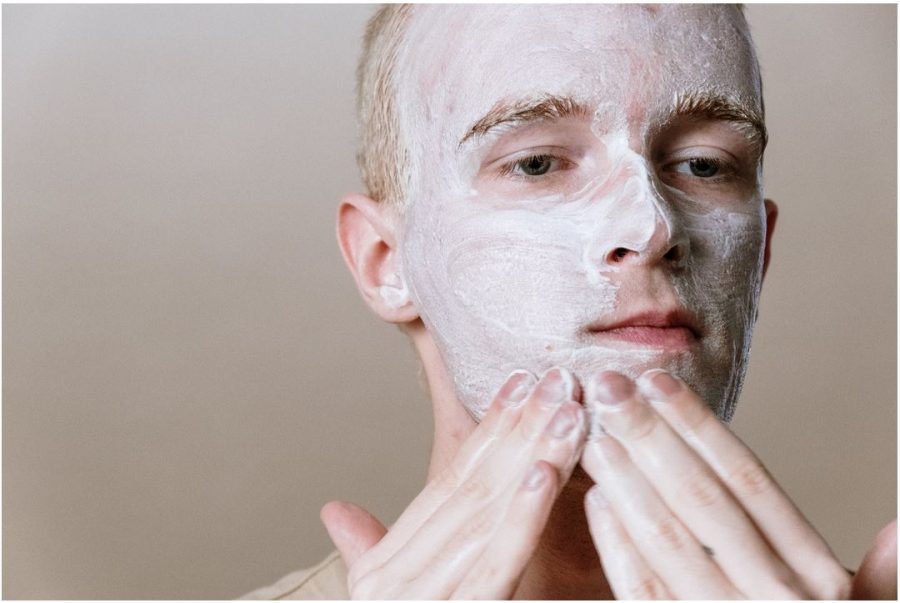Skin Care Tips For Getting Rid Of Your Acne Based On Your Specific Skin Type
80% of people in the United States suffer from acne at some point in their life. It usually strikes during puberty, but some people continue to struggle with their skin well into adulthood. Before buying the latest medications and trying the latest holistic methods, you should learn more about your skin. When you know your skin type, you can choose the most effective acne control method.
You fall into one of four skin types:
- Oily
- Dry
- Combination
- Sensitive
We will cover the best way to treat acne based on each skin type and when you should go to a dermatologist.
Acne Treatment Based on Skin Type
Here are some considerations when treating acne for each skin type. Don’t know what skin type you have? Take this quiz to find out (or ask your doctor).
Oily
Most people associate oily skin with acne more than any other type. People with oil skin secrete oil from fat out of their large pores, and this creates acne. You will need to look for products that dry the skin out a bit and minimize your pores.
Dry
Dry skin can develop from excessive sun exposure or a lack of hydration. However, some people suffer from dry skin every day. The dry skin may feel tight and develop cracks or flakes. When treating acne on dry skin, you need to make a point to use products that won’t dry your skin out. Otherwise, your skin will get even more dehydrated and look worse. Look for products that simultaneously treat acne while also moisturizing the skin. Always wear sunscreen.
Combination
Combination skin has both oily and dry spots. Generally, the oily areas concentrate in the T-zone (forehead and down the middle of the face). You will need to take special care to manage oil in this area but prevent drying around the cheeks. This may require multiple products.
Sensitive
Sensitive skin doesn’t necessarily have too much oil or too little oil, but it responds quickly and severely to stimuli, such as heat or itchiness. You should use mild products and as little of them as possible.
Dermatology refers to the study of the skin and treatment of skin conditions. You should schedule an appointment with a dermatologist for medium to severe diseases or conditions that don’t respond to treatment. Your dermatologist can prescribe more vital medication or try different methods to get the desired results. If something about your appearance bothers you, there’s probably cosmetic surgery or treatment that can help. Whether you want to remove signs of aging from your skin, or get your body back in shape after pregnancy, a cosmetic surgeon can lift, tuck, and reshape your body in different ways. One common type of cosmetic surgery is dermabrasion. It is used on the skin to remove scars, small growths, and even wrinkles. It can be done on any part of the body, but the face is one of the most popular areas to have dermabrasion. Here’s how this procedure can help the appearance of your skin and how it’s done.
How Dermabrasion Improves Skin Appearance
Dermabrasion is a surgical procedure that removes the top layers of your skin. This is done with a wire brush or wheel that rotates rapidly and basically sands off the surface of your skin. The procedure can be confined to a small area to remove an acne scar or it can be done over a larger area of your face to remove shallow wrinkles. The procedure isn’t as effective on deep wrinkles since it only removes the surface layers of skin. Dermabrasion works because it damages the skin and triggers it into growing new skin that creates a new surface free from scars and fine wrinkles.
How Dermabrasion Is Done
The specifics vary according to how large of an area is treated. If you’re having an extensive procedure, it may be done under general anesthesia. It’s even possible that you’ll need an overnight stay in the hospital. However, many times the surgery is performed as an outpatient with the use of local anesthesia and IV sedation. Once your skin is numb, ice is applied, or a freezing agent is used, to make your skin firmer for the treatment. A small area is worked on at a time until the surgery is complete. The area is covered with bandages to stop the bleeding and to protect it while it heals. There will be swelling afterward, and you may be advised to keep wet bandages on the area or apply ointment frequently to reduce scab formation. New skin will grow in quickly and it will have a pink tint that gradually turns the color of the rest of your skin in the coming weeks and months. It will take several weeks to see the final results of the procedure since you need to allow time for swelling to go down, the scabs to disappear, and for the pinkness to go away.
Dermabrasion results give your skin a new appearance, especially if you have scars removed. However, it doesn’t stop the aging process. Your skin can still be damaged by sun exposure and form new wrinkles as you age. Once you’ve healed from dermabrasion, you’ll want to care for your skin to slow down wrinkles and sagging. Also, protecting your skin from the sun is a good practice to follow during recovery and after.
If you are interested in eliminating and minimizing the signs of aging from your face, you should look into anti-wrinkle treatments. There are numerous cosmetic procedures that you can choose for the purpose of regaining your youthful skin, including fillers, injections and topical treatments. If these solutions are used correctly, they will reduce wrinkles, crow’s feet, age spots and fine lines. Unfortunately, the results of the anti-wrinkle treatments are not everlasting. Therefore, if you are planning on getting a rejuvenating cosmetic procedure, you should use the outlined tips to keep the skin looking great for longer.
Use a Gentle Wash
You should use a gentle cleaning product or formula for cleansing your face after your anti-wrinkle treatment. In general, as the skin ages, it becomes less oily, and the anti-wrinkle procedures will increase sensitivity. If you use harsh anti-acne washes or other strong formulas, you will cause skin irritation. A mild facial wash will keep your skin clean while preserving its health. For example, you can choose a product with fatty acids to deliver hydrating compounds. You should also be sure to use soft cleaning motions instead of scrubbing the skin aggressively for the best results.
Improve Sun Protection
The UV radiation from the sun can accelerate the signs of aging. In simple terms, if your skin is constantly exposed to the harsh heat and sunlight, you will notice more prominent wrinkles alongside other signs of aging. Therefore, the benefits of your anti-aging treatments will decline quickly. Unfortunately, you cannot avoid the sun completely. If you need to be outdoors during the day, you should establish a strategy for UV protection. You should use a broad-spectrum sunscreen to minimize the effects of harmful rays. You should also consider staying in a shaded are. If this is not possible, you should wear a wide-brimmed hat and protective eyewear to keep your face protected.
Consider Retinoid Use
You should plan on using facial products with retinoid for the preservation of your youthful skin. Typically, the skin tends to lose collagen as an individual advances in age. This protein is responsible for keeping the skin elastic and supple, and it will give your face a smooth and lifted look. Once it decreases, the number of wrinkles increase. Fortunately, you can preserve the suppleness of the skin by using retinoid. Retinoid will stimulate the skin cells, facilitating the production of collagen. In addition, it will cause a significant reduction of the fine lines and wrinkles on your facial skin.















